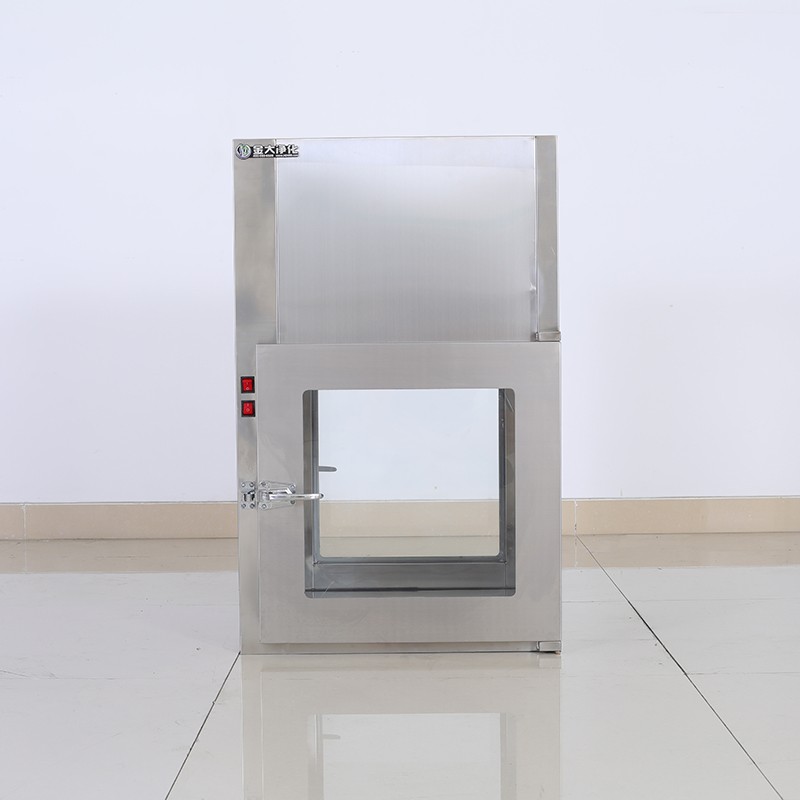
- English
- Español
- Português
- русский
- Français
- 日本語
- Deutsch
- tiếng Việt
- Italiano
- Nederlands
- ภาษาไทย
- Polski
- 한국어
- Svenska
- magyar
- Malay
- বাংলা ভাষার
- Dansk
- Suomi
- हिन्दी
- Pilipino
- Türkçe
- Gaeilge
- العربية
- Indonesia
- Norsk
- تمل
- český
- ελληνικά
- український
- Javanese
- فارسی
- தமிழ்
- తెలుగు
- नेपाली
- Burmese
- български
- ລາວ
- Latine
- Қазақша
- Euskal
- Azərbaycan
- Slovenský jazyk
- Македонски
- Lietuvos
- Eesti Keel
- Română
- Slovenski
- मराठी
- Srpski језик
What is a mechanical interlock pass box and how does it work?
2024-10-14

What are some features of a Mechanical Interlock Pass Box?
Some features of a Mechanical Interlock Pass Box are:
- - Stainless steel construction for easy cleaning and durability
- - HEPA filters to eliminate airborne contamination
- - Interlocking doors to prevent cross-contamination
- - UV germicidal lamps to kill any microorganisms that may be present
- - LED lighting for improved visibility
What are the advantages of a Mechanical Interlock Pass Box?
Some advantages of a Mechanical Interlock Pass Box are:
- - Reduced risk of contamination in the manufacturing process
- - Improved efficiency and workflow by allowing for the transfer of materials without the need for personnel to change clothing or enter cleanrooms
- - Reduced energy costs by minimizing air exchange between clean and non-clean areas
How does a Mechanical Interlock Pass Box work?
A Mechanical Interlock Pass Box has two chambers with doors on each side. The doors are interlocked, meaning that only one can be open at a time. When a material is placed in the box from one side, the door is closed, and the material is sterilized using UV light or other methods. Once the material is sterilized, the door on the other side can be opened, and the material can be removed from the box.
What industries use Mechanical Interlock Pass Boxes?
Mechanical Interlock Pass Boxes are commonly used in the following industries:
- - Pharmaceuticals
- - Microelectronics
- - Hospitals and healthcare facilities
- - Food and beverage
- - Laboratories and research facilities
In conclusion, the Mechanical Interlock Pass Box is an essential piece of equipment for any cleanroom or controlled environment. It provides a secure and effective way to move materials between two areas, minimizing the risk of contamination and improving efficiency and workflow. For more information on Mechanical Interlock Pass Boxes, visit Suzhou Jinda Purification Engineering Equipment Co., Ltd.'s website at https://www.jdpurification.com or contact us at 1678182210@qq.com.
References
1. Smith, J. (2010). "Mechanical Interlock Pass Boxes and Their Applications" Journal of Cleanroom Technology, 12(3), 45-52.
2. Lee, S. (2013). "Design and Evaluation of a Compact Mechanical Interlock Pass Box" IEEE Transactions on Components, Packaging and Manufacturing Technology, 3(2), 245-250.
3. Johnson, T. (2016). "New Advances in Mechanical Interlock Pass Box Technology" International Journal of Pharmaceutical and Healthcare Sciences, 2(1), 18-23.
4. Lee, H. (2019). "Controlling Contamination in Healthcare Facilities with Mechanical Interlock Pass Boxes" Journal of Healthcare Engineering, 10(4), 26-33.
5. Wang, X. (2020). "Investigation of the Performance of Different Types of Mechanical Interlock Pass Boxes in Sterile Manufacturing" Journal of Pharmaceutical Sciences, 109(12), 3567-3574.
6. Chen, Y. (2021). "Exploring the Role of Mechanical Interlock Pass Boxes in Improving Cleanroom Efficiency" Cleanroom Management, 17(2), 10-15.
7. Kim, W. (2018). "Evaluation of the Effectiveness of Mechanical Interlock Pass Boxes in Minimizing Cross-Contamination in Food Processing Plants" International Journal of Food Microbiology, 282, 40-46.
8. Luo, Y. (2017). "Development and Evaluation of a Large-Scale Mechanical Interlock Pass Box for Microelectronic Manufacturing" IEEE Transactions on Semiconductor Manufacturing, 30(4), 478-483.
9. Park, S. (2012). "Improving the Quality of Laboratory Research with Mechanical Interlock Pass Boxes" Journal of Laboratory Technology, 9(3), 74-81.
10. Zhang, L. (2015). "Optimization of Mechanical Interlock Pass Box Design for Reduced Energy Use in Cleanroom Environments" Sustainable Energy Technologies and Assessments, 12, 96-102.



